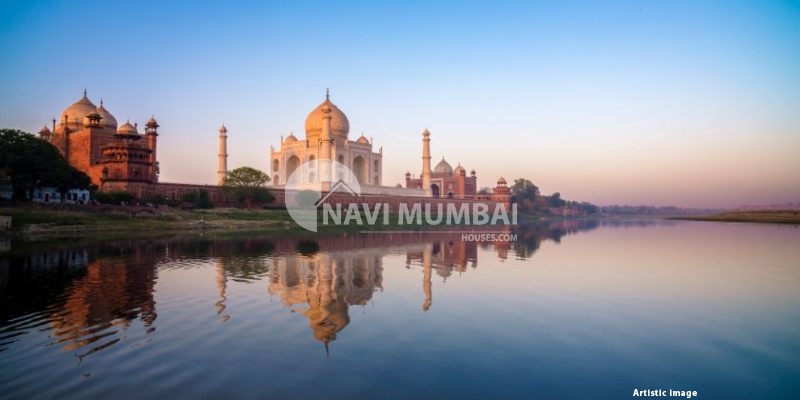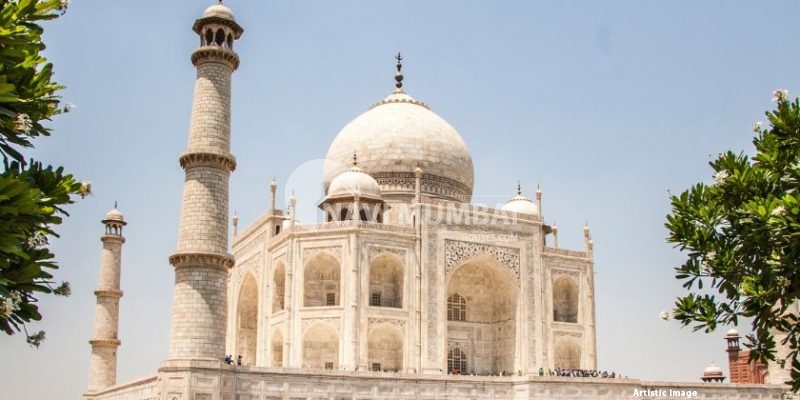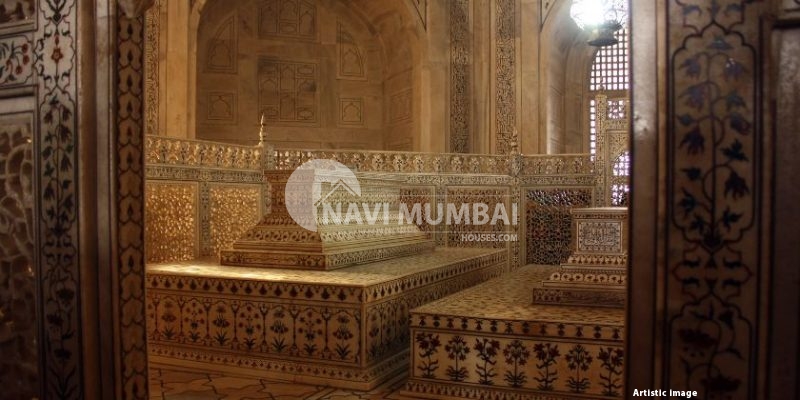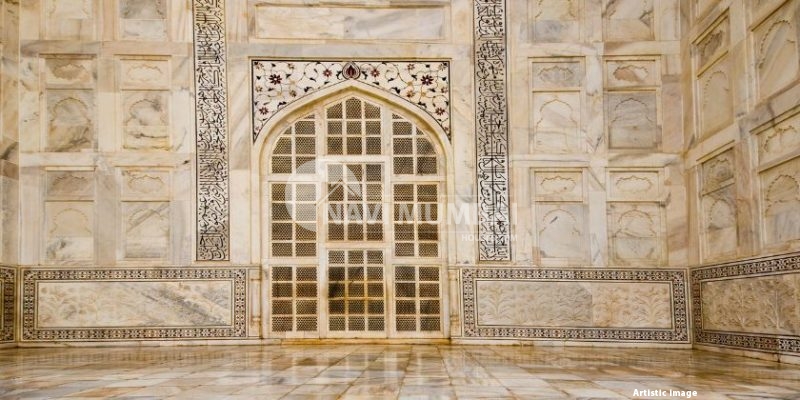
How Much Shah Jahan Spent On Taj Mahal?
Although the Taj Mahal is indescribably expensive, it would be interesting to know how much money it would cost to build it now. According to author Jadunath Sarkar’s book “Studies in Mughal India,” the Taj Mahal was finished in January 1643 and cost about 42 million rupees. Some estimation, the Taj Mahal may have cost Rs 9.17 crores at the time. According to unofficial estimates, Shah Jahan may have spent close to Rs 70 billion, or over USD $1 billion in modern dollars, to build the Taj Mahal for his wife Mumtaz. There won’t be another Taj Mahal in the twenty-first century or even the one after that.
Are you looking for badlapur new project?
Taj Mahal’s price
The Taj Mahal cost about 42 million rupees. These charges were calculated using a list of artisans. Once lost, these lists made a comeback and were Persian in origin. There is a group of about 40 artists, each with a history and a monthly salary for carrying out a specific task. Muhammad Handif, the person in charge of overseeing construction or the Mir Imarat, was in charge of keeping track of the financial papers.
The Taj Mahal was divided into multiple parts during the construction operations. Element by element estimates were made for the total cost. For contrast, the Taj Mahal’s marble base and four minarets cost 5177 674 rupees, 7 annas, the two major burials cost 5,345,361 rupees, and the marble railing around the monument cost 468,855 rupees, 2 annas.
The Imperial Royal Treasury and the Government of Agra Province both provided funding for the Taj Mahal’s construction (subah Akbarabad). The people in charge of finances kept track of the accounts. The cost of the stones and the wages paid to the laborers were the main sources of costs associated with building the Taj Mahal. It’s possible that the Taj Mahal’s construction cost was equal to about 466.55 kg of royal gold.

Taj Mahal Repair Expenses
Waqfs, which are religious or humanitarian foundations create through endowed trust funds, were promote by Shah Jahan. A third of the 300,000 rupees that the waqf provided came from 30 villages in the Agra district. The remaining sum came from taxes collected on the sales made in bazaars, markets, and long-gone roadside inns. The surplus would be distributed by the Emperor. The waqf would also handle normal maintenance and pay for the costs associated with the cemetery agents and the Hafiz.
The Measuring Units
Tola was the weight measurement unit in former times. It is 11.33 grammes in weight. The price of a gold tola during the 16th century Taj Mahal construction was Rs 15. Along with the Rupee, there was also the Anna, the Pais, and the Pie, each of which had a value of four Anna and four Pais, respectively, in older times. The estimated rupee cost of building the Taj Mahal was 41,848,426 Rupees, 7 Annas.
Taj Mahal’s Annual Revenue
2019 sources claimed that the Taj Mahal made Rs 200 crores from ticket sales during the previous three years. There was no decline in attendance despite an increase in ticket costs. 2 crore domestic and foreign tourists visited the Taj over the course of three years. The Taj’s preservation cost the government Rs 13.3 crores at the same time.
|
Year |
Taj Mahal’s revenue |
Tourists |
|
2016-17 |
Rs 55.09 Cr |
61.77 lakhs |
|
2017-18 |
Rs 58.76 Cr |
65.65 lakhs |
|
2018-19 |
Rs 86.48 Cr |
70.9 lakhs |
The Taj Mahal in Agra generated roughly four times more revenue in 2018–19 than it had in the previous five years combined. The centrally protected ticketed monuments saw almost 5 crore visitors in 2019–20, but the Covid–19 pandemic caused that number to drop to just 1.19 crore in 2020–21. According to data from the Ministry of Culture, ticket sales at the Taj Mahal and other attractions like the Red Fort, Ajanta, and Ellora Caves decreased from Rs 336 crore in 2019–20 to just over Rs 40 crore in 2020–21 as a result of lockdown prohibitions and travel bans during the Covid-19 pandemic.
History of Taj Mahal

In addition to the Taj Mahal’s astronomical price, the iconic building also has a fascinating past.
Shah Jahan, then known as Prince Khurram, was engaged to Arjmand Banu Begum, afterwards known as Mumtaz, when he was 15 years old. She married Shah Jahan when she was 20 years old, and they were together for the next 19 years when the queen gave birth and passed away. The monarch is believe to have been so overcome with sadness that he would spend hours alone, give up using colors, smells, gems, and even give up on being king if he had not thought of it as his moral imperative. The monarch had two other wives, although they were obtain through political ties. One of the Seven Wonders of the World is located in India. It is report that Mumtaz request Shah Jahan to construct a shrine in her honor on her deathbed, “the likes of which may not be seen anywhere else in the world.”
Architecture of Taj Mahal

The consistency of shapes established in the hierarchical accent reveals “Shahjahani” architecture. The entire complex, which also boasts of shafts, little arches, etc., uses the Shahjahani column.
The tomb, which has naturalistic ornamentation, is the major structure. The can provide you see in honor of the king and queen, which are surround in an 8 room and a marble lattice screen, are merely for ornamental purposes. The coffins are situate in a room at the garden level, far below.
Precious Stones Incorporated Into Taj Mahal

The Taj Mahal was decorate with priceless stones that were collect from various locations. These gems include Cornelian from Qandahar, Lapis Lazuli from Ceylon, Onyx, Patunja from the river Nile, Gold from Basra, Khatu from the hill of Jodhpur, Ajuba from the hill-rivers of Kumaon, Marble from Makrana, Maria Ma from the city of Basra, Ba/U-stone from the river Banas, Vamini from Yemen. Mnngah from the Atlantic Ocean, Tamrah from the river Gandak, Giraliori from the river of Gwalior, Red sandstone, Jasper from Persia from the river Asan.
15 Amazing Taj Mahal Facts
- Taj Mahal was recognize as a UNESCO World Heritage Site in 1983 because it is the crowning achievement of Muslim art in India. One of the most beloved works of art in human history.
- Because Islamic culture prohibits decorating coffins, only the exteriors—not the graves of Shah Jahan and Mumtaz—are decorate.
- Mumtaj’s remains was initially place in Burhanpur before being transport to Agra. Where it was inter for 12 years in the Taj Mahal complex before being move to the Taj Mahal’s basement.
- The Taj “changes” throughout the day as a result of the sun’s influence and it may seem as grey, pale pink, pure white, or even orange-bronze. It takes on a bright blue appearance at night.
- The outdoor garden is a representation of heaven on earth.
- There are rumors that the Taj Mahal was suppose to have a black twin monument. Where Shah Jahan’s body would have been inter, but this never happen.
- Ustad Ahmad Lahauri, a Persian who also built the Red Fort, was the Taj Mahal’s principal architect.
- There is no evidence to support the rumor that all the artisans had their hands removed after finishing the Taj Mahal. The emperor really assigned the artisans to other tasks.
- The Taj Mahal is five feet taller than the Qutub Minar at 240 feet tall.
- The original location of the Taj Mahal was not Agra but Burhanpur, Madhya Pradesh, where the queen passed away. However, because Burhanpur did not have enough white marble, the location was change. The tomb is cover in calligraphic inscriptions that list 99 different names of Allah.
- Along with his favorite household helpers. Shah Jahan’s other wives are inter in mausoleums outside the Taj within the same complex.
- The renown Taj Mahal was built after over 22 years of labor by more than 20,000 workers and 1,000 elephants.
- There is a no-fly zone over the Taj Mahal, thus aero planes are not permit to fly over it.
- The Taj had to be hidden by the Archaeological Survey of India during World War II.
- The Taj is spread out over 17 hectares, and the octagonal interior hall is 58 feet in circumference and 80 feet in height.
You’re looking for New Projects in Shilphata we have the Best New Projects in Shilphata like Ready to Move & nearby possession: https://navimumbaihouses.com/properties/search/shilphata/
If you want daily property update details please follow us on Facebook Page / YouTube Channel / Twitter





